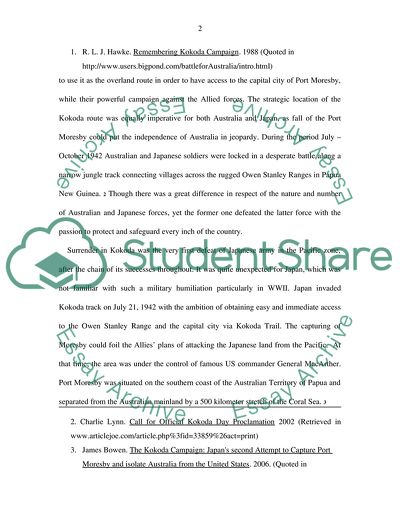Cite this document
(The Defeat of Japanese Forces in The Kokoda Campaign of 1942 Literature review, n.d.)
The Defeat of Japanese Forces in The Kokoda Campaign of 1942 Literature review. https://studentshare.org/history/1716144-australian-history
The Defeat of Japanese Forces in The Kokoda Campaign of 1942 Literature review. https://studentshare.org/history/1716144-australian-history
(The Defeat of Japanese Forces in The Kokoda Campaign of 1942 Literature Review)
The Defeat of Japanese Forces in The Kokoda Campaign of 1942 Literature Review. https://studentshare.org/history/1716144-australian-history.
The Defeat of Japanese Forces in The Kokoda Campaign of 1942 Literature Review. https://studentshare.org/history/1716144-australian-history.
“The Defeat of Japanese Forces in The Kokoda Campaign of 1942 Literature Review”. https://studentshare.org/history/1716144-australian-history.


